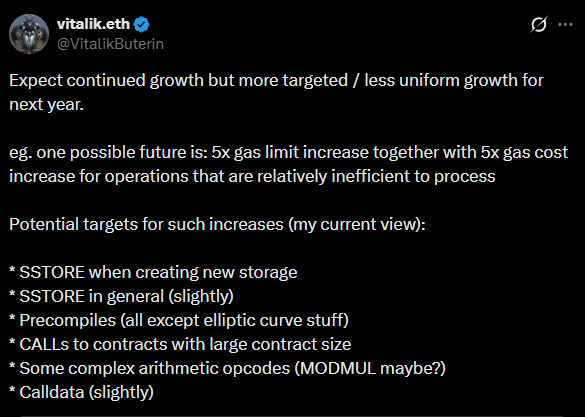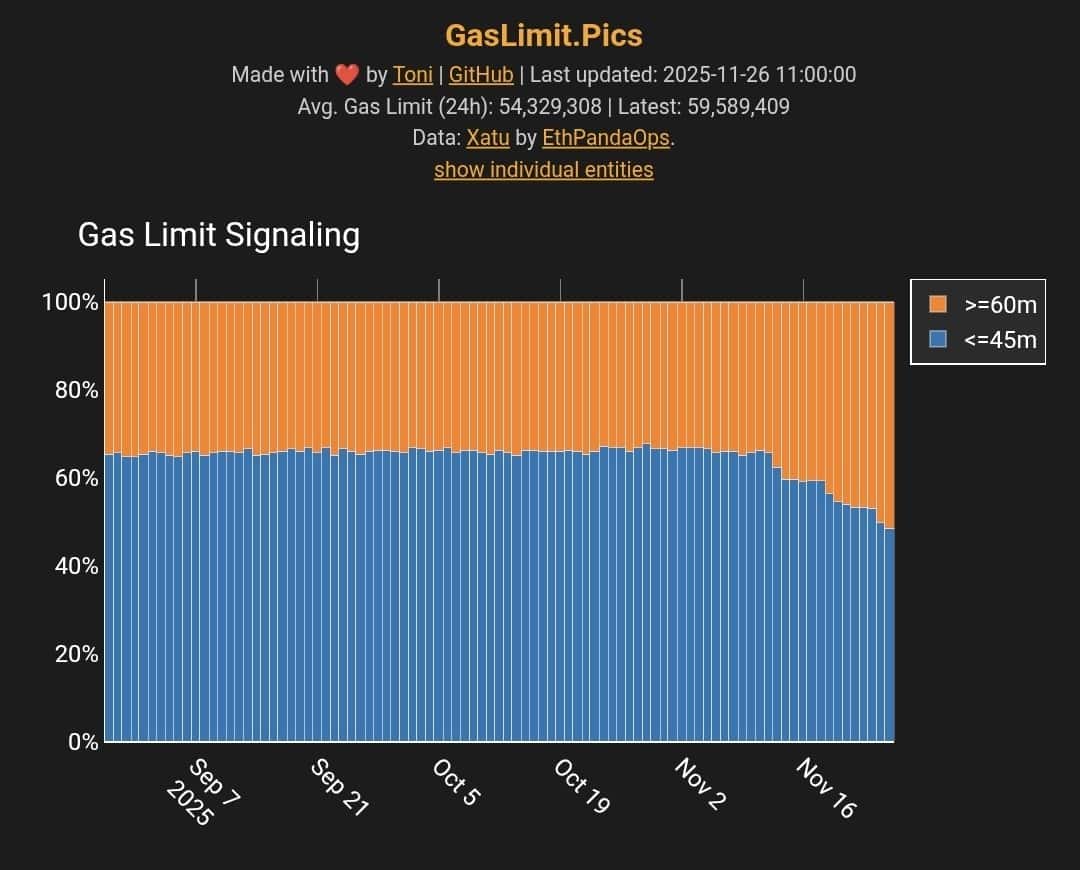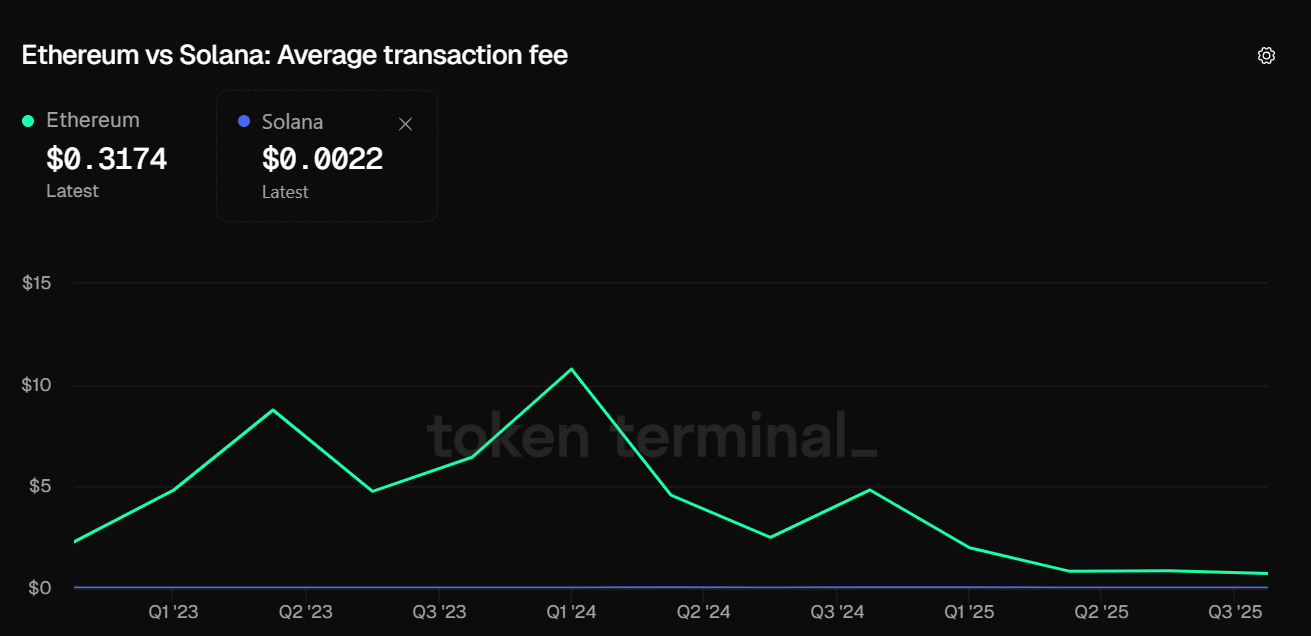Ethereum scaling plans for 2026 include a targeted 5x increase in the gas limit, as outlined by co-founder Vitalik Buterin. This follows the Fusaka upgrade in December 2025, aiming to boost transaction throughput, lower Layer 2 fees, and enhance network efficiency while managing node demands.
-
Ethereum’s current gas limit stands at 60 million per block, supporting higher transaction volumes without compromising security.
-
The Pectra upgrade in 2025 improved validator efficiency and Layer 2 scalability, setting the stage for further optimizations.
-
Average transaction fees on Ethereum have dropped to about $0.31 in late 2025, narrowing the cost gap with competitors like Solana.
Ethereum scaling plans for 2026 promise a 5x gas limit boost to enhance throughput and reduce fees. Discover how these upgrades position Ethereum against rivals like Solana and what it means for users and developers. Stay informed on the latest blockchain advancements.
What Are Ethereum’s Scaling Plans for 2026?
Ethereum scaling plans for 2026 focus on targeted efficiency improvements, including a potential 5x increase in the gas limit, as shared by Ethereum co-founder Vitalik Buterin in a recent post on X. This initiative builds on the momentum from the 2025 Pectra upgrade and the upcoming Fusaka activation in early December, aiming to process more transactions per block while maintaining network stability. By prioritizing efficient operations, these plans will help lower costs for users on Layer 2 solutions without overwhelming node operators.
In an X post, Vitalik Buterin emphasized the need for “targeted growth” in the gas limit to support Ethereum’s evolving ecosystem. For context, the gas limit determines the computational capacity of each block, directly influencing how many transactions can be included.

Source: X
Increasing the gas limit allows for more operations per block, which translates to higher throughput and reduced fees on Layer 2 networks. However, Buterin noted that inefficient or data-heavy transactions would face higher costs to prevent excessive strain on the network’s storage and processing resources. This balanced approach ensures sustainable growth for Ethereum’s decentralized applications and smart contracts.
Ethereum’s development team, including researchers from the Ethereum Foundation, has been monitoring gas usage trends closely. As of November 2025, the network’s gas limit is set at 60 million gas units per block, a significant rise from previous years. This adjustment reflects community consensus on balancing scalability with security, drawing from extensive testing and simulations conducted by core protocol developers.
How Does the Gas Limit Increase Impact Ethereum’s Performance?
The proposed 5x gas limit increase under Ethereum scaling plans could dramatically enhance the network’s ability to handle complex transactions. Currently, Ethereum processes around 15-30 transactions per second on the base layer, but with Layer 2 rollups, effective throughput exceeds 100 transactions per second. A higher gas limit would enable even denser blocks, potentially pushing base layer capacity higher while keeping Layer 2 fees competitive.
Toni Wahrstätter, a researcher at the Ethereum Foundation, highlighted that the gas limit doubled over the past year to reach 60 million, based on observed demand from decentralized finance and non-fungible token ecosystems. This change has already contributed to a 50% reduction in average fees throughout 2024, bringing costs down to approximately $5 per transaction at peak times. In 2025, further optimizations from the Pectra upgrade— which introduced improvements to validator efficiency, Layer 2 data availability, and wallet interactions—have driven fees even lower.

Source: Gas Limits
The Fusaka upgrade, scheduled for early December 2025, will build on these foundations by elevating block gas limits and streamlining node operations. According to Ethereum Foundation documentation, Fusaka targets a 20-30% increase in overall capacity, reducing latency and operational overhead for participants. Expert analyses from protocol engineers suggest this could lower Layer 2 transaction costs by an additional 15-20%, making Ethereum more accessible for everyday users and small-scale developers.
Looking ahead to 2026, the targeted efficiency upgrades will prioritize selective scaling. Rather than a blanket increase, developers plan to incentivize optimized code through dynamic pricing mechanisms. This ensures that while throughput rises, the network remains resilient against spam or inefficient dApps. Historical data from previous hard forks, such as the London upgrade in 2021, demonstrate that such measures have successfully mitigated congestion during high-demand periods, like NFT minting booms.
From a technical standpoint, gas limit adjustments require broad consensus among validators and node operators. The Ethereum Improvement Proposal process has incorporated feedback from thousands of community members, underscoring the protocol’s decentralized governance. As Buterin has stated in past discussions, “Scaling isn’t just about speed; it’s about sustainable, equitable growth that benefits the entire ecosystem.”
Frequently Asked Questions
What Are the Key Features of the Fusaka Upgrade in Ethereum Scaling Plans?
The Fusaka upgrade, activating in early December 2025, focuses on increasing block gas limits and optimizing node storage requirements as part of Ethereum scaling plans. It will enhance throughput by allowing more transactions per block while reducing operational costs for Layer 2 solutions. This upgrade is expected to improve network capacity by 25%, based on simulations from the Ethereum Foundation.
How Will Ethereum’s 2026 Gas Limit Changes Affect Transaction Fees?
Ethereum’s planned 5x gas limit increase in 2026, announced by Vitalik Buterin, aims to lower average transaction fees further from the current $0.31 level. By boosting block capacity, it will distribute computational load more evenly, making Layer 2 interactions cheaper and faster. This conversational adjustment ensures Ethereum remains user-friendly, handling spikes in activity without fee surges.

Source: Token Terminal
Why Is Ethereum Pursuing Aggressive Scaling to Compete with Solana?
Ethereum scaling plans are designed to close the performance gap with Solana, which offers transactions at $0.0022 compared to Ethereum’s $0.31. By increasing gas limits and efficiency, Ethereum aims to match Solana’s speed while leveraging its superior decentralization and institutional trust. Data from network analytics show Ethereum’s fees have halved since 2024, with 2026 upgrades poised to accelerate this trend.
Solana’s appeal lies in its high throughput, demonstrated during the 2024 memecoin surge, where low fees enabled widespread participation. Ethereum, however, benefits from a more mature ecosystem, with over $100 billion in total value locked across DeFi protocols as of late 2025. The Pectra upgrade already enhanced Layer 2 interoperability, allowing seamless bridging and reduced settlement times. Fusaka will further this by optimizing data compression techniques, potentially cutting cross-layer fees by 40%.
Competitive dynamics drive Ethereum’s strategy: while Solana processes up to 65,000 transactions per second in bursts, Ethereum’s modular approach—relying on rollups like Optimism and Arbitrum—scales sustainably. Analysts from firms like ConsenSys predict that post-2026 upgrades, Ethereum could achieve effective throughput rivaling Solana’s without centralization risks. This positions Ethereum as the preferred platform for enterprise adoption, where security and auditability are paramount.
Key Takeaways
- Targeted Gas Limit Growth: Ethereum’s 2026 plans include a 5x increase to boost throughput, as per Vitalik Buterin’s vision, ensuring efficient scaling without node overload.
- Upgrade Momentum: The Pectra and Fusaka upgrades in 2025 have already lowered fees to $0.31, with further reductions expected to compete with Solana’s low costs.
- Competitive Edge: By enhancing Layer 2 scalability, Ethereum maintains its lead in decentralization while closing speed and fee gaps—explore these developments to optimize your blockchain strategies.
Conclusion
Ethereum scaling plans for 2026, highlighted by the anticipated 5x gas limit increase and gas limit optimizations, represent a pivotal step in the network’s evolution. Building on the successes of the Pectra upgrade and the imminent Fusaka activation, these initiatives will enhance throughput, reduce Layer 2 fees, and solidify Ethereum’s position against competitors like Solana. As the blockchain landscape continues to mature, staying attuned to these developments will empower developers, investors, and users to capitalize on Ethereum’s robust, decentralized future.
